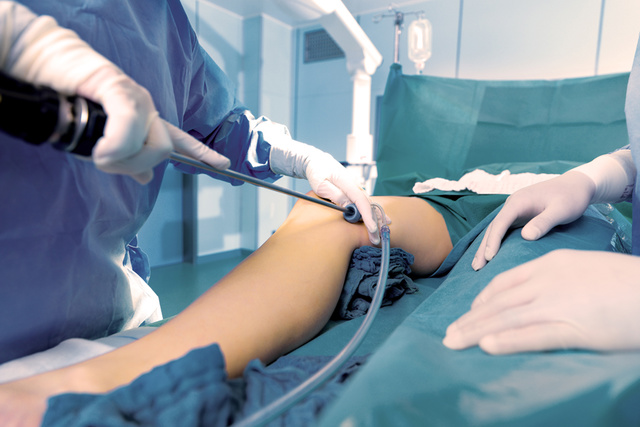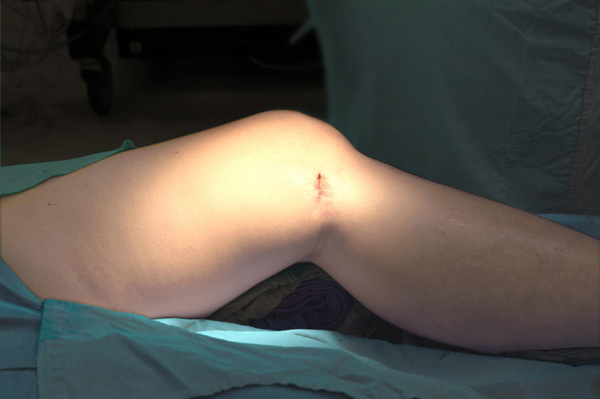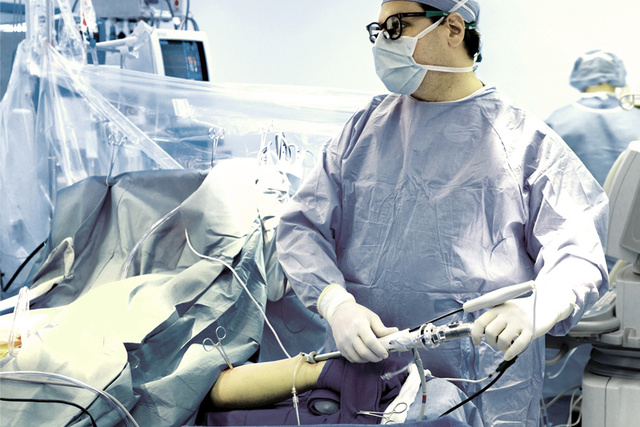Endoscopic vessel harvesting (EVH)
safe, effective and proven

Endoscopic vessel harvesting (EVH) is at the forefront of technological advances that improve vessel harvesting for coronary artery bypass graft (CABG) surgery. The EVH procedure uses a smaller incision to obtain a bypass conduit for CABG than traditional vessel harvesting procedures. The smaller incision means reduced infection rate, reduced pain and less scarring—while also leading to faster recovery, better clinical outcomes, and enhanced patient satisfaction.
EVH a good option for many patients
Regardless of how the harvest procedure is performed, other blood vessels in the leg or forearm remain in place. Endoscopic vessel harvesting (EVH) is the standard of care in the United States and is performed in most heart surgery hospitals.

The Clinical Advantages of EVH
Results from several studies show that endoscopic vessel harvesting significantly decreases the incidence of wound complications when compared to open vessel harvesting (OVH) and bridging techniques.
Endoscopic vessel harvesting improves mean time to ambulation, reduces postoperative pain, hospital length of stay, readmissions and overall cost.
Download the clinical abstracts to learn more about the topics below
Reduced wound complications and infection
Results from several studies show that EVH significantly decreases the incidence of wound complications when compared to open vessel harvesting (OVH) and bridging techniques.
Reduced postoperative pain
Three separate studies have documented that patients who undergo EVH report less perceived postoperative leg pain than patients who undergo OVH.
Reduced time to ambulation and reduced length of stay
EVH improves mean time to ambulation and reduces hospital length of stay, as demonstrated in multiple clinical studies.
Reduced readmissions and overall cost
EVH patients experience lower rates of hospital readmission and outpatient office visits when compared to patients with traditional open vessel harvesting.

EVH is superior to bridging
The bridging approach — which replaces one long incision with a series of small incisions — has been clinically shown to be inferior to EVH in many aspects.
A series of separate studies demonstrates that when compared to bridging EVH offers:
- Lower wound complication rate
- Better endothelial quality
- Reduced time to ambulation
- Shorter hospital stays
- Improved cosmesis

Expanding your options: endoscopic radial artery harvesting (ERAH)
There is a growing interest in the radial artery as a conduit in CABG surgery due to its potential for improved long-term patency and good conduit characteristics.
Clinical studies have shown that ERAH can be performed safely with only infrequent, minor complications.

Equivalent conduit quality and early graft patency
The success of coronary artery bypass graft (CABG) surgery is affected by the quality of the conduit, and how it is handled during the vessel harvest and preparation steps.
Good conduit quality is obtained by vessel harvesting techniques that maintain the integrity of the harvested blood vessel and protect it from damage. This helps to ensure long-term graft patency and optimal patient outcomes.

Importance of the EVH procedural training in optimizing conduit quality
In many parts of the world, EVH is being recognized as the preferred method for harvesting a conduit to be used in CABG procedures. In the United States, 90% of hospitals perform EVH.

EVH improves patient satisfaction
As EVH becomes an increasingly popular procedure to reduce morbidity and improve patient satisfaction, certain factors should be considered to maximize patient outcomes and optimize the quality of the conduit. These include selection of the device, reduction of thermal spread/injury, post-harvest preparation and avoidance of over-distension, and a focus on training techniques to preserve conduit quality.
Explore our products
Find the right products and solutions for you